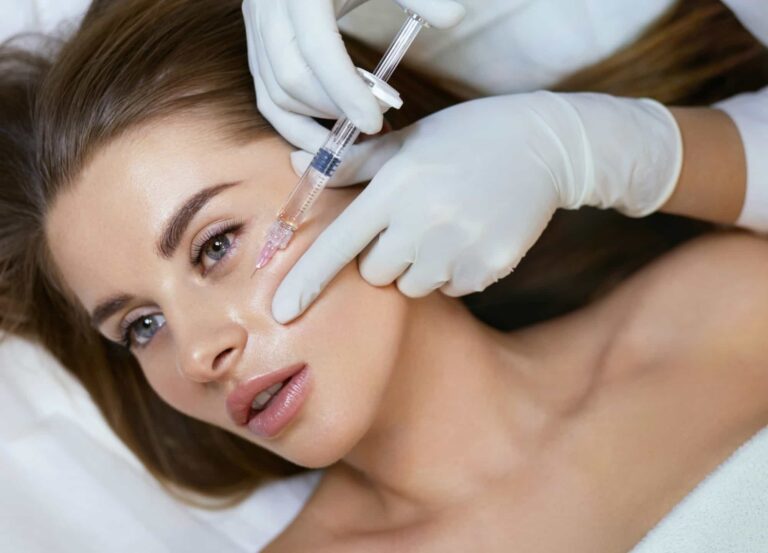There’s no way around it: we’re likely entering a recession. The prices of everything from eggs to houses are creeping up higher and higher, meaning that many Americans have to tighten up their budgets—which may be in direct opposition to their aesthetic goals. Doctors are also feeling the crunch and seeing shifts within their practices.
Here, we share the insights of dermatologists and plastic surgeons across the country as they work with their patients to navigate our current economy. Spoiler alert: they want to help you save as much as possible.
There are some treatments that seem to be recession proof…
“When the economy contracts, each segment [of aesthetic procedures] tends to behave a little differently. In the noninvasive segment, Botox and Dysport tend to preserve their market space and patients will continue to seek them out, and fillers, lasers, and noninvasive body contouring tend to pull back a little. The reason is, Botox and Dysport are really maintenance-driven procedures that people get very accustomed to and really see great satisfaction with. Fillers a little bit too, but Botox and Dysport are the preeminent types of treatments that people won’t walk away from, even when money gets a little tighter.
“On the surgical side, liposuction and breast augmentation tend to be really recession proof; part of the reason is that they’re aspirational surgeries. They’re surgeries people have wanted since they were younger and thought, When I get my first job, when I have some money and am able to, that’s one of the things I’m going to do. And because people are on that journey for [years], those are [surgeries] where people tend to say, ‘I’m going to do this no matter what, because I’ve been thinking about it for so long.’”—Dr. Steven H. Williams, a board-certified plastic surgeon in Dublin, California, and president-elect of the American Society of Plastic Surgeons
“Patients are being more selective about which procedures are the most important to them and spending their money on those procedures first. Neuromodulator treatments are less expensive procedures that yield great results and have great patient satisfaction. Many of my patients love doing an annual winter Fraxel laser treatment for sunspots, precancerous lesions, and photoaging. These patients are mostly men and women in their 40s to 60s, and I have not seen much of a change in this demand.“—Dr. Hayley Leight-Dunn, a board-certified dermatologist in Charlotte, North Carolina
“I am seeing an uptick in surgeries—people want one-and-done-type procedures. They are looking for a faster fix and a faster way to start living with confidence. In the long run, this can give them 100% results at a cheaper price right away.” —Dr. Sheila Nazarian, a board-certified plastic surgeon in Beverly Hills, California
“Usually, when money is scarce, there is something called ‘the lipstick index,’ which is when lipstick sales increase because people need a quick way to look and feel better and lipstick can achieve that for them. Botox and filler are the ‘lipstick’ of this generation because they offer fairly quick fixes, similar to the way lipstick can.”—Dr. Jennifer Levine, a board-certified facial plastic surgeon in New York City
“The current trends in plastic surgery requests are very similar to those 15 years ago [during the last recession]. Breast augmentations tend to skew toward a younger demographic who are more price sensitive but [generally speaking] are some of my most commonly performed surgeries. Body contouring with liposuction is always very popular. As our population tends toward increasing BMIs, all forms of body contouring have seen a great uptick. As bariatric surgeries and less invasive weight-loss surgeries become more popular, skin removal after massive weight loss becomes more and more requested. However, as the recession progresses and more jobs are cut, my patients wait longer to go forward with these larger-cost procedures.”—Dr. Michele Koo, a board-certified plastic surgeon in St. Louis
…While other procedures get booked less frequently during bad economic times
“There was a decrease in surgical procedures overall and an increase in nonsurgical procedures during the last recession. I have not started to see any changes as of yet as we enter another recession. Overall, there has been a decrease in hyaluronic acid fillers and an increase in biostimulatory fillers, [calcium hydroxylapatite] fillers, lasers, and nonsurgical devices such as Emface.” —Dr. Levine
“Now, like 15 years ago, there is much more shopping around plus an increased length of time to commit to the surgery. There is a slight decrease in combination surgeries—primarily in more extensive, costlier surgeries of entire-body makeovers—but face and breast surgical requests remain strong. I have [also] seen a decrease in labiaplasty and transgender top surgeries.”—Dr. Koo
Delayed shipping, supply chain issues, and surging costs affect providers too
“Many, if not most, of the injectable brands have increased prices for the product. This makes it difficult for smaller private practices to continue to try and keep prices reasonable for patients. Inflation has, unfortunately, caused the prices for most luxury services to increase, both to the practices who use them and, ultimately, for the patients that we serve.
“There is more than 8% overall inflation currently in the United States. Medical practices are dealing with increased cost of labor, consumable cost—injectables or the laser tips themselves—other supplies needed to perform these procedures—e.g., gauze, needles, syringes, topical or injectable lidocaine—and even increased building costs—rent, electrical, water, etc. All of this leads to a very heavy cost burden on the practice. We are doing our best currently to minimally raise prices to our patients, but it will be inevitable if the economy continues on this trend.” —Dr. Leight-Dunn
“Over the past year, our practice has experienced lidocaine, lidocaine with epinephrine, and saline shortages. At some points, we had a several-week supply left of lidocaine with epinephrine needed to perform Mohs surgeries. We have had to get creative, ordering lidocaine with epinephrine from dental supply, and I have heard of colleagues who are also experiencing similar shortages diluting their lidocaine with epinephrine by 50% with saline. Purchasing dental lidocaine with epinephrine is four times the cost, but we rely on these supplies to perform surgeries and cosmetic procedures, so they are a necessity. Of late, [rising costs] have not affected our pricing structure, but I wouldn’t be surprised if prices are adjusted to reflect overall increase in cost of supplies, amongst other cost-influencing factors.”—Dr. Tiffany Libby, a board-certified dermatologist in Providence, Rhode Island
“We have not yet passed price increases onto our customers, but we may need to take that into consideration starting in January.” —Dr. Levine
“There have been supply chain issues with lidocaine, skin-care products, and certain IV drip ingredients. Prices for lidocaine were astronomical for a while. I already am at the top of the pricing range, so I am able to absorb these costs. I have not raised rates based on these issues, which are hopefully temporary.” —Dr. Nazarian
“During the height of COVID-19, there was a delay in and scarcity of operating room supplies such as drapes, gloves, and even anesthesia medications. That isn’t so much the case, but the cost of supplies is definitely increasing. This translates to increased operating room and anesthesia fees. This increase affects the overall package cost of a procedure.
“Younger surgeons might decrease their surgical fees to remain competitive and busy, while more-established plastic surgeons are unwilling to give up more of their expertise and time by lowering their fees. As a well-established female plastic surgeon, I personally am not reducing any fees. My fees have remained the same for 15 years! The cost of the entire procedure may increase by 10-20%, but that is primarily because of operating room and anesthesia costs.“—Dr. Koo
There are ways to save money without sacrificing treatment
“As we enter a recession, many patients have to budget for their skin care and procedures. At the consult, I go over their top cosmetic concerns. We can then make a treatment plan for the entire year, based on their budget. We can modify this plan next year as we see how the financial markets or their personal discretionary income changes.
“[Other] money-saving behaviors include the use of CareCredit, purchasing injectables when there is a discount event at the practice, and spacing out neuromodulator treatments by a few extra weeks. I have also had a few patients change the number of syringes they are doing or space them out—for example, doing tear trough filler now and planning to do lip filler later. Spacing out the costs of the procedures over time makes them more manageable for many of my patients.“ —Dr. Leight-Dunn
“I am seeing patients be a bit more reserved in spending tons of money at once. They are breaking up their procedures and not doing them all at once. CareCredit usage has been prevalent as well.” —Dr. Nazarian
“Piecemealing and turning to skin care, fillers, and neuromodulators is very strong and on the rise because of the efficacy, immediate results, and relatively lower dollar outlay. I still have many patients requesting facelifts, eyelid surgeries, and brow lifts, but they may only proceed with one at a time rather than trying to do them all in one surgery session. During economic prosperity, most of my patients prefer to have only one surgery and one recovery time, opting for combination surgeries. CareCredit certainly has helped accessibility for cosmetic procedures, but many plastic surgery offices will not accept it due to additional fees.”—Dr. Koo
“We offer package pricing on certain items for a discount, [and we] work with several third-party payment-plan companies such as CareCredit, which allow patients to pay off their balance over time. We also see patients who either split their payments up into different payment methods or use a specific credit card to maximize their points.”— Dr. Levine











